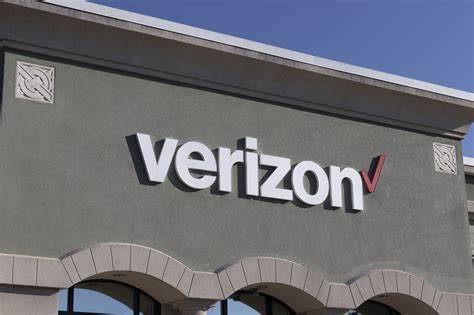Verizon Communications Inc. had a strong launch to 2025, beating estimates on both the top and bottom lines. The company topped EPS expectations of $1.15 with an adjusted number of $1.19. For the quarter, revenue was $33.5 billion, close to the estimated $33.37 billion. Verizon can continue to do this without disrupting its financial momentum even in the competitive telecom environment. Gains like this haven’t prevented the stock from falling 1.72% in premarket trading and closing at $42.19 as investors worry about subscriber metrics.
Record EBITDA and Revenue Growth
Adjusted EBITDA was $12.6 billion, the highest ever for Verizon, yet a 4% growth over the prior year. Wireless revenue grew by 2.7%, in line with the company’s guidance at the high end of the growth range. Verizon’s ability to control costs and focus on high-value segments enabled the company to achieve an improved EBITDA margin. The company also recorded a major increase in free cash flow that rose more than $900 million from the previous year and making its financial flexibility stronger to pay dividends, reduce debts, or make strategic investments.
Also read: Gold Hits Record $3,500 After Trump Attacks Fed Chief Jerome Powell
Subscriber Trends: A Mixed Picture
Verizon’s financial metrics were strong, but the quarter showed continued subscriber retention problems. Investors watch closely postpaid phone subscribers, and the company lost 356,000 of them. Part of the reason was due to price hikes and churn from federal government accounts. Yet, Verizon added 67,000 net business phone subscribers and 137,000 prepaid net additions, its best prepaid performance since the TracFone acquisition. However, executives said that the churn is temporary and that subscriber growth should return during 2025.
Value, Perks, and the Convergence of Strategic Initiatives
Despite all this, Verizon maintains a position of being the top telecommunications company by differentiating itself through customer-focused initiatives. In addition to the gross additions lift, this new “Verizon Value Guarantee” has a three-year price lock and free phone guarantee. Offerings that are bundled with premium connectivity, streaming services and exclusive perks along with insurance are bought ‘My Plan’ and ‘My Home’ respectively to increase customer tonality and the average connection per client (rupee). The broadband expansion with both Fios and fixed wireless access (FWA) is also on the cards as the company aims to have 8–9 million FWA subscribers by 2028.
Market Outlook and Growth Potential
The stock’s immediate drop after the earnings was due to earnings, but analysts are still optimistic about Verizon’s future. The stock is attractive for income-focused investors with a stable 6.31% dividend yield and a very conservative beta of 0.4. The company assured that it will fulfill full year 2025 guidance and that it will grow wireless service revenue, expand EBITDA, and reduce churn. With continuing 5G deployments, the AI initiatives and the Frontier acquisition approaching, Verizon faces an opportunity to leverage its position of leadership across the mobility and broadband markets.








